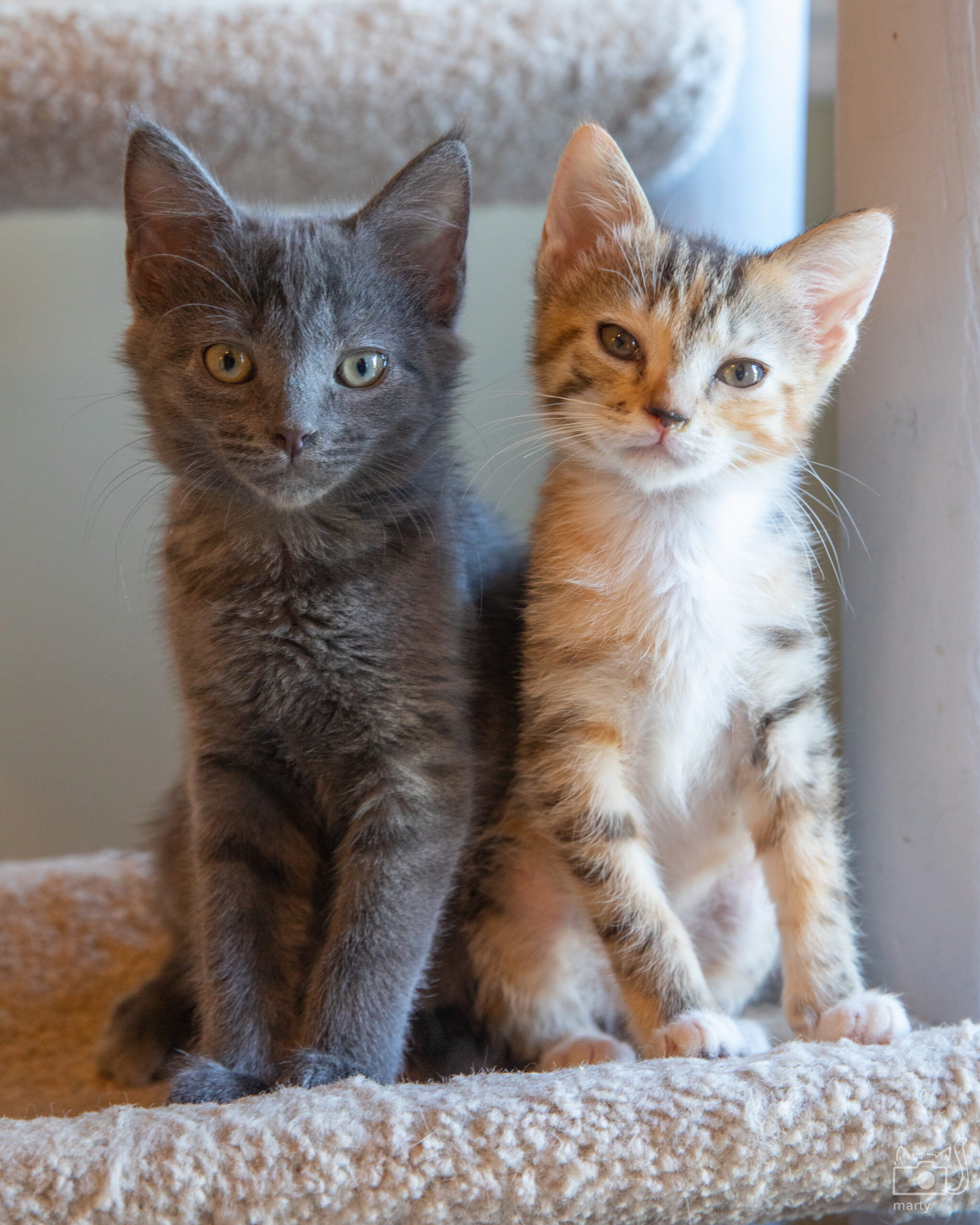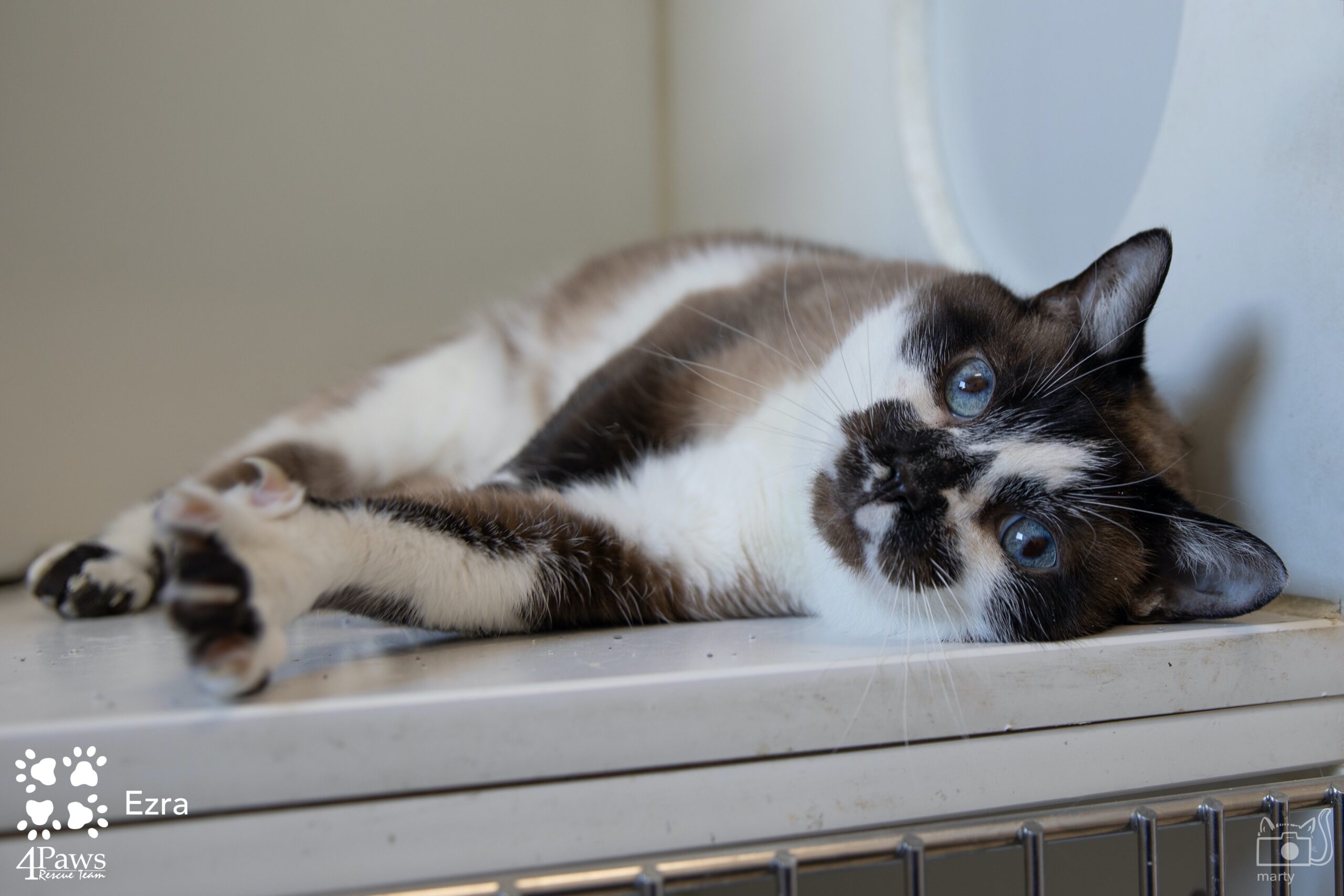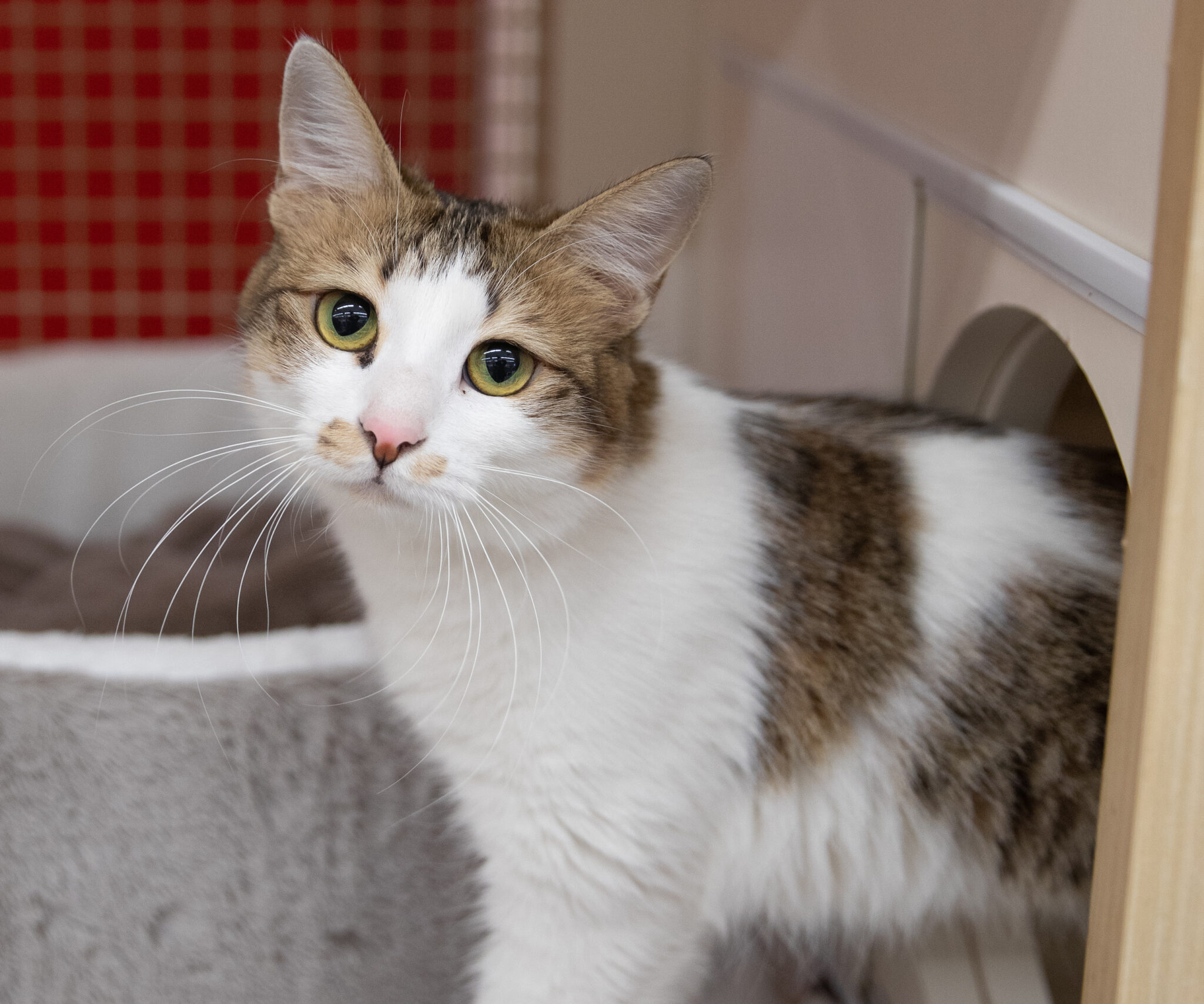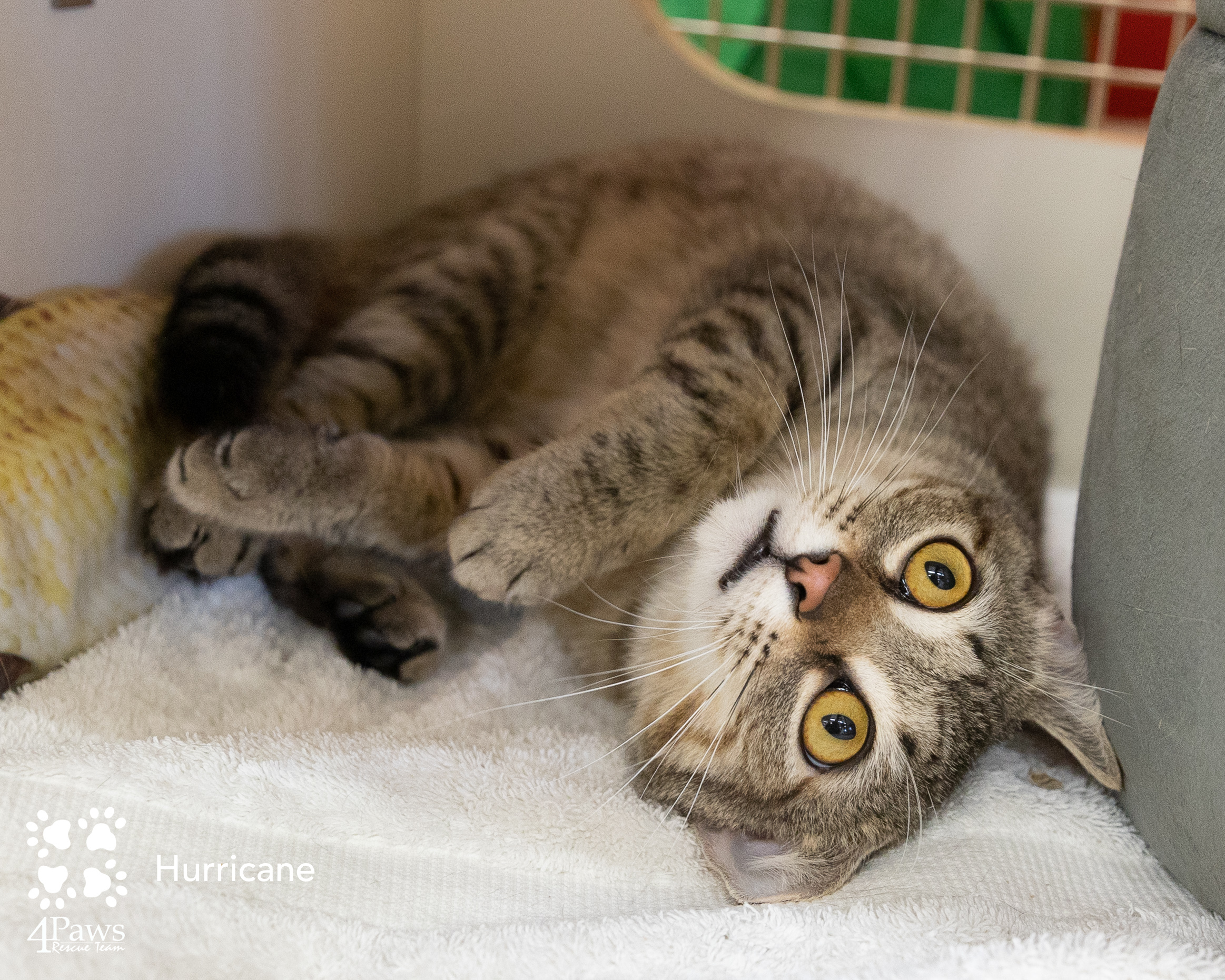The new cat and resident cats should have no face-to-face interaction for the first week. This will allow the new cat time to get comfortable with his new home and family.
Signs of Stress
The stress of a new environment can cause a cat to show signs of an upper respiratory infection (watch for sneezing, eye or nose discharge) or diarrhea. Watch to make sure that the new cat is eating well, drinking and using the litter box. In almost every case, a cat that does not use his litter box is suffering from a medical condition. Any instance of inappropriate elimination (outside of the litter box) should be followed up with a visit to the vet.
Introduce smells first.
After keeping the new cat in a room of his own for the first week, start introducing the smells of each cat to the other. You can do this by brushing all of the cats with the same brush to get their scents on each other. Also, try feeding them each a special treat on either side of the door. Doing so will help each cat to associate the smell of the other cat with the positive experience of eating the treat (usually wet food works best). You may want to have your resident cats go into the new cat’s room (and visa versa) when he is not there to help them get acclimated to his scent.
After introducing smells for a few days, when you are ready for the first face-to-face introduction, put the new cat in his carrier and let the resident cats come into the “safe room.” This will give you an opportunity to observe the interaction among the cats while the new cat is protected in his carrier.
See aggression? Pull back.
Usually with this initial meeting there will be some hissing and/or posturing. If the interaction seems as though it could lead to aggression, you will need to do this controlled introduction using the carrier a few more times before removing the barriers and allowing the cats to meet face-to-face. If the cats all appear to be curious or simply wary with no outward signs of aggression, then you can open the carrier door and let the new cat walk out into the territory of the resident cats.
Do not rush this process. It is very important to the long term harmony of their relationship that the introduction process proceed at a pace comfortable for each of the cats.
The first weeks are crucial
Monitor all interactions closely during the first weeks. Do not leave the cats alone unsupervised until you are comfortable that there will not be aggressive behavior displayed by any of the cats. During the first few weeks, the new cat should stay in his “safe room” when no one is home to supervise.
If interaction among the cats deteriorates instead of improving, return the new cat to his “safe room.” At this point you will need to start the introduction process again, this time, taking more time at each stage.




